Small Scale Utopia. The Coin Street's Case
January 19, 2009

Coin Street Action Group's campaign against the construction of offices in the neighbourhood
Coin Street is а small Street in London’s South Bank which gives its name to the Neighbour’s association that made possible the change in neighbourhood’s course.
In the early 60’s South Bank was а land of opportunities on the other side of the Thames. Located in а thin strip of land between the bridges of Hungerford and Blackfriars, its urban plot was made of old harbour warehouses, small industries and empty plots, as а consequence of the War’s bombings. The resident population, that lives on the back streets, reached 50,000 inhabitants.
The first transformation plans started to be drawn up in the late 40’s. In 1943, Patrick Abercrombie had already pointed out the South Bank’s shortages and potential with regard to the Thames North Bank. The first Institutional restoration attempt was the election of the site as the Great British Exhibition’s Headquarters in 1951. At the end of the Exhibition, the South Bank continued to be а land of opportunities and, of all the buildings arected for the occasion only one remains, The Royal Festival Hall, constructed by local architects Mathew and Martin and restored in zoo7 by Allies & Morrison.
Between 1955 and 1970, the area was marked as tertiary land for successive urban plans. The office’s market which, since the б0’s started to exceed the City’s limits, laid its eyes on the other side of the river. It was the petrol company, Shell, that first arrived in 1961, with two blocks of 11 floors and а 26 storey tower, located at the back of the Royal Festival Hall. The rest of the Exhibition sites housed two buildings for cultural events: the Queen Elisabeth Hall, with а music chamber and the Hayward Gallery, dedicated to Visual Arts, both designed by local architects and finished in 1968. However, the architectonic language used and the cultural complex’s management-with а program thought for the elite-, made the second attempt of the area’s restoration by the authorities difficult.
The urban design didn’t help either with the regeneration: the pedestrians lost the control of the Street and were relegated to subterranean paths and elevated footbridges in order to give preference to cars, which caused security problems and brought about uncivic behaviour; there were no shops or restaurants; the audience attended the shows and then abandoned the area immediately; the urban mesh continued to divided by the bombing consequences; the population descended from 50,000 to 4,000 by the late 70’s and the old industries which had settled on the banks of the river closed and so did the majority of schools and shops.
The land seemed to be fertilized for office promoters, which started to submit proposals for the area, but found the opposition of residents who didn’t want that part of London to become а second city. Various action groups were formed and merged in to the Coin Street Action Group, formed in 1977. Its aim was to occupy the plots with affordable housings, green areas and amenities for the inhabitants. A utopia, at first site, for which they fought for over seven years. During that time, the promoters acquired some of the unused buildings, such as the Oxo Tower, destined to be demolished, and presented an action plan, while the residents designed theirs too. Both plans were submitted to PubIic Report and both were admitted in 1983. By then, half the site was the promoter’s property, while the other half was Greater London Council’s (GLC) property.
In 1981, something significant happened: Ken Livingstone, the Labour politician born in Lambeth, who from the year 2000 would become London’s Mayor, gained the GLC’s Presidency, and from then on the local authority, -who until then had supported the promoters-favoured the neighbour’s plan. Livingstone made it so difficult for the construction of offices that the Iand devaluated and the promoters ended up selling their part to the GLC, who then resold the whole 5,6 hectares to the neighbours -constituted in a limited, non-profit company, called Coin Street Community Builders (CSCB)- for one million pounds.
The Coin Street’s Community acquired the land with council loans. In order to pay them back, it turned the empty sites into paying parking tots. Next, it freed the river bank and made a river walk between the Waterloo and Blackfriars bridges, with two living areas between them. This is how Gabriel’s Wharf, a port sheds complex transformed into shops and cafes, around a small esplanade, and Bernie Spain Gardens were created. This was the first sign that showed that something was going on on this side of the river. The Coin St. management of these rented premises was just a rehearsal for the next operation the Oxo Tower Wharf’s restoration and management. This whole, made up of two buildings, had various industrial uses through out the XIX century, until it was acquired by a Meat products company, Liebig, in 1927. Albert Moore then added the art dесó tower and, dodging the rule that forbade luminous ads on the river, constructed the cavities which coincided with the name of one of the company’s products, the OXO stock cubes. In 1970, the buildings were not in use and were destined to be blown up. In 1984, when Coin St. СВ became the owner, it was decided to transform them in a multiuse complex, with businesses in the lower storeys, rented out to design workshops, specialised shops, art galleries, cafes and restaurants, and a house renting cooperative on the higher levels. The restoration was carried out by Lifschutz Davidson Architects, and finished in 1996. The Question is: How could the Coin street Community face the 20 million pounds project’s cost? At first they thought of associating themselves with a company specialised in Commercial buildings, but it didn’t take them long to realise that the economical aims of a commercial promoter and those of the community were not the same. So they started the adventure all by themselves. ln addition to their capacity to take risks, they had great versatility to adapt to the changing political situation, which in the 90’s became more restrictive as to granting institutional subsidies. The continuance of the conservative party in the central government had taken power away from the Town Halls. The Greater London Council and its subsidies disappeared. The conservatives established a new way to assign the money destined to restoration: each part of the city that wanted restoring should form a partnership between social, economic and politic agents of the area and bring forward their proposal to tenders so that one area would compete with the others in order to get hold of the funds (1). In this context, Coin Street Community Builders associated with various local company groups, profiting from the interests which many companies there located started to show for the improvement in quality and surveillance of the environment. In this way, it was able to compete for the regeneration founds and managed to restore the Oxo Tower, which became, with its remarkable location on the river’s showcase, the CSCBs and the restoration’s zone flagship, four years before the opening of the Tate Modern. The introduction of a luxury restaurant in the upper floor raised some criticisms among the residents, though, how could have they raised founds for the community otherwise, without bringing in well off customers? -was justified by the CSCB. A Robin Hood’s new version ga1loped over the South Bank.
Affordable housing, density and quality
The rest of plots included in the action area were dedicated to affordable renting housing. The promotion known as the Iroko Housing, that took place in 2002, by Howorth Tompkings Architects, was the last and most interesting, which shares block with the community’s centre finished in 2007 by the same authors. Iroko Housing is located over one of the parking lots used as a financial source and for which a cellar, that was later included in the project, was excavated. Differently from the other three earlier promotions, the Haworth Tompking project shows a mixture of typologies and achieves a density of 74 houses/ha. or 334 rooms/ha., (taking into account that we are talking about houses of 6 to 8 rooms it is more exact to establish density by rooms). Coin St. The Neighbourhood Centre is the building which doses the block and has a very diverse programme, with rooms for the community, a kinder garden, an office floor, conference halls for rent and a big independent commercial space on the ground floor, also for rent.
Doon St. Tower
The next step in the CSCB’s course is the promotion of a great mixed use building for the last of the plots, located behind the Denis Lasdun’s National Theatre. The project has been highly criticised by certain neighbourhood groups for it was an ambitious mixed uses promotion including 329 housings for sale in the free market. To compensate, the complex houses an indoors swimming pool and a sports centre for the neighbourhood, as well as a private dance centre, shops, offices and parking lots. At 143 metres high, and the absence of council housing within the high rise tower, were taken as betrayal to the ideals of the neighbour’s fight. Nevertheless, the people responsible for Coin. St. argue that the necessities of the neighbourhood are now equipment and not council housing.
After 30 years, the career of Coin St’s Community brings about praises and reproaches, though it is obvious that their work has triggered another series of improvements for the South Bank, most of which promoted by the Iocal company partnerships and Iocal institutions. The adaptation of the river bank and the elimination of barriers in the South Bank Centre complex have been the most visible and the ones that have attracted most visitors. Nevertheless the social scar that the Coin St. community has included in the future promoters agenda will be the one which will definitely change the neighbourhood’s destiny.
(1) During John Majors management the City Challenge Fund (1991) was introduced and later the Sіпg1e Regeneration Budget Challenge Fund (1994) which establishes the new founds assignation system. The Restoration National Agency, English Partnerships, is responsible for the fund’s assignation
Bibliography
Guy Baeten. “From community planning to partnership planning. Urban regeneration and shifting power geometries on the South Bank, London”. Department of Geography, University of Strathclyde, U.K.
GeoJournal 51: 293–300, 2000. 2001 Kluwer Academic Publishers.
Andrew Bibby. Coin Street Case study. University of East London
Haworth Tompkins. Iroko Dwellings. Density. New Collective Housing. Javier Mozas, Aurora Fernández Per. a+t ediciones ISBN 84-611-1203-2
Haworth Tompkins. Coin Street Neighbourhood Centre. a+t 30 Civilities II. a+t ediciones ISSN 1132-6409
Article published in ARQUITECTURA COAM, num 354 (4T_08)
Magazine published by the Official Architecture Association of Madrid.




RELATED POSTS
|
|
|


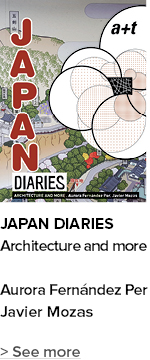
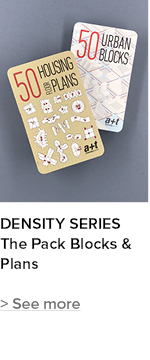

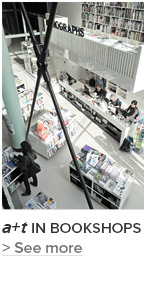
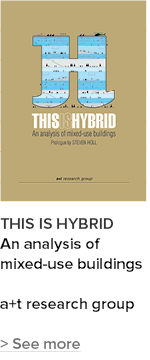


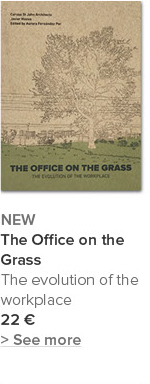

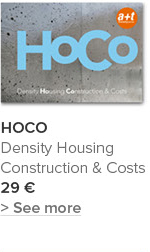
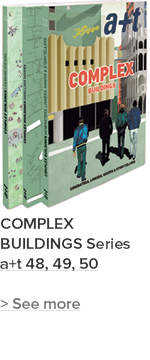

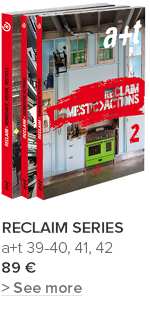
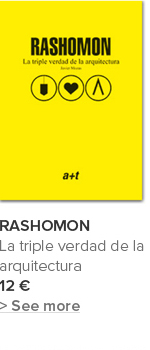
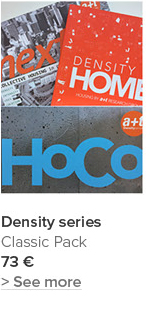








 I've read and agree to
I've read and agree to 


